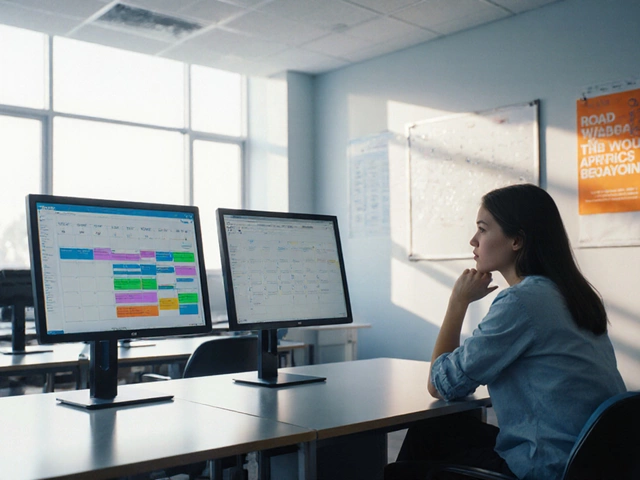Indian Diploma Recognition Checker
Find out which countries recognize your Indian diploma and what requirements you need to meet for study or work abroad. Based on your diploma level and accreditation.
Check Your Diploma Recognition
Wondering if you can hop on a plane with your Indian diploma and start studying or working abroad? You’re not alone. Every year thousands of Indian graduates ask which foreign doors will open for them. This guide walks you through the most common destination countries, how they assess Indian diplomas, and the exact steps you need to take to get a green light.
Quick Takeaways
- United Kingdom, Canada, Australia, New Zealand, Germany, United States and Singapore are the top recognizers.
- Most countries require an equivalency certificate from a credential‑evaluation body.
- Processing times range from 2 weeks (UK NARIC) to 6‑8 weeks (US WES).
- English‑language proficiency tests (IELTS/TOEFL) are usually mandatory.
- Visa eligibility often hinges on the recognized status of your diploma.
Understanding the Indian Diploma Landscape
In India, a "diploma" typically refers to a post‑secondary program lasting 1‑3 years, offered by polytechnics, engineering colleges, or specialised institutes. While diplomas are highly valued locally, they sit below a bachelor's degree in the global hierarchy. This distinction matters because many foreign universities and employers compare diplomas against their own qualification frameworks.
To make sense of overseas acceptance, you first need to know the two key attributes of your diploma:
- Programme level - Is it a Level 5 (Advanced Diploma) or Level 6 (Professional Diploma) according to the Indian National Qualifications Framework?
- Accreditation body - Was it approved by AICTE, UGC, or a state board?
These details appear on your Indian diploma a post‑secondary credential awarded by polytechnics or technical institutes in India, usually after 1‑3 years of study. Providing them up front speeds up the equivalence assessment abroad.
How Credential Evaluation Works Overseas
Most countries do not look at the diploma itself; they rely on a third‑party evaluation agency. The agency reads your transcript, checks the accrediting authority, and then maps your qualification to the local qualification framework. The outcome is an "equivalency certificate" that you attach to applications.
Here are the three most common agencies:
- World Education Services (WES) a US‑based credential evaluator that translates foreign qualifications into US and Canadian equivalents
- National Recognition Information Centre (NARIC) the UK’s official body that assesses foreign qualifications for UK institutions and employers
- Australia’s Department of Education - Overseas Qualification Recognition (OQR) service
Choose the agency that aligns with your target country; using the wrong one can add weeks of delay.
Top Countries That Accept Indian Diplomas
| Country | Primary Evaluator | Typical Acceptance Level | Key Requirements | Processing Time |
|---|---|---|---|---|
| United Kingdom | NARIC | Equivalent to Level 5/6 Diploma or Foundation Year | English proficiency, transcript, accreditation proof | 2‑3 weeks |
| Canada | WES | Vocational diploma, often recognised for college entry | IELTS 6.0, detailed syllabus, AICTE approval | 4‑6 weeks |
| Australia | Australian Government OQR | Advanced Diploma (AQF Level 6) | Course outlines, English test, occupation relevance | 3‑4 weeks |
| United States | WES | Associate‑level credential, often accepted for community colleges | TOEFL/IELTS, detailed mark sheet, accreditation copy | 5‑8 weeks |
| Germany | UniAssist / ZAB | Fachschulabschluss (technical school certificate) | German language B1‑B2, credential evaluation | 4‑6 weeks |
| New Zealand | NZQA | Level 5/6 Diploma, suitable for vocational training | English, transcript, program description | 3‑5 weeks |
| Singapore | MOE (Ministry of Education) | Technical diploma, often leads to polytechnic admission | English, accreditation, relevant work experience | 2‑4 weeks |
Notice the pattern: English proficiency is almost always a must, and the evaluation agency varies by destination. Keep this table handy when you plan your next move.
Step‑by‑Step: Getting Your Indian Diploma Recognised
- Gather official documents: Original diploma, detailed transcript, and the AICTE/State Board accreditation letter.
- Translate if needed: Use a certified translator for non‑English documents. Some evaluators demand a notarised translation.
- Choose the right evaluator: For the UK, register with NARIC; for Canada and the US, create an account with WES; for Australia, submit through the OQR portal.
- Submit the application: Upload scans, pay the fee (US$100‑$200 range), and attach the English‑language test scores.
- Track progress: Most services provide a dashboard where you can see status updates. Expect a “pre‑assessment” comment within a few days.
- Receive the equivalency certificate: This PDF is your passport to universities, colleges, or employers.
- Apply for the visa: Use the certificate as proof of qualifications when you fill out the student or skilled‑worker visa form.
Pro tip: Order the evaluation a month before your intended start date. Delays happen, especially when additional document verification is required.

Common Pitfalls and How to Avoid Them
- Missing accreditation proof: Some evaluators reject applications without the AICTE letter. Keep a scanned copy ready.
- Outdated syllabus: If your diploma was awarded more than five years ago, you may need to provide a refreshed curriculum from the institution.
- Ignoring language scores: Even if your course was taught in English, most countries still require IELTS/TOEFL. Aim for at least 6.5 IELTS.
- Assuming all diplomas are equal: Level 5 Advanced Diplomas have a better chance than Level 4 Technical Diplomas. Check the specific level before applying.
- Skipping the visa timing: Some countries (e.g., Canada) link the visa processing directly to the receipt of the equivalency certificate. Align the two timelines.
Checklist Before You Submit
- Original diploma and transcript (both original and clear scans)
- Accreditation letter from AICTE or state board
- Certified English translation (if needed)
- IELTS/TOEFL score report
- Course syllabus or detailed module list
- Application fee ready (credit card or PayPal)
- Passport copy for visa linkage
Cross‑check each item against the evaluator’s checklist to reduce back‑and‑forth emails.
Frequently Asked Questions
Can an Indian diploma be used for a master’s program abroad?
Usually not directly. Most master’s programmes require a bachelor’s degree. However, in the UK, an Advanced Diploma with sufficient work experience can be considered for a postgraduate diploma, which may later lead to a master’s pathway.
Do I need to re‑apply for each country separately?
Yes. Each country recognizes credentials through its own evaluation agency. A certificate from NARIC won’t be accepted in Canada without a separate WES report.
How much does the evaluation cost?
Fees vary: NARIC (£120 ≈ US$150), WES ($100‑$200), Australian OQR (AUD $120). Some agencies offer express processing for an extra $50‑$100.
Is a digital copy of the diploma enough?
Most evaluators accept high‑resolution PDFs, but they may ask for the original or a notarised copy if the document has security features. Keep the original safe until the process finishes.
What if my diploma is from a private college?
Private colleges are accepted if they are AICTE‑approved. If the college lacks accreditation, you’ll need a letter from the Ministry of Education confirming the program’s validity.





Write a comment